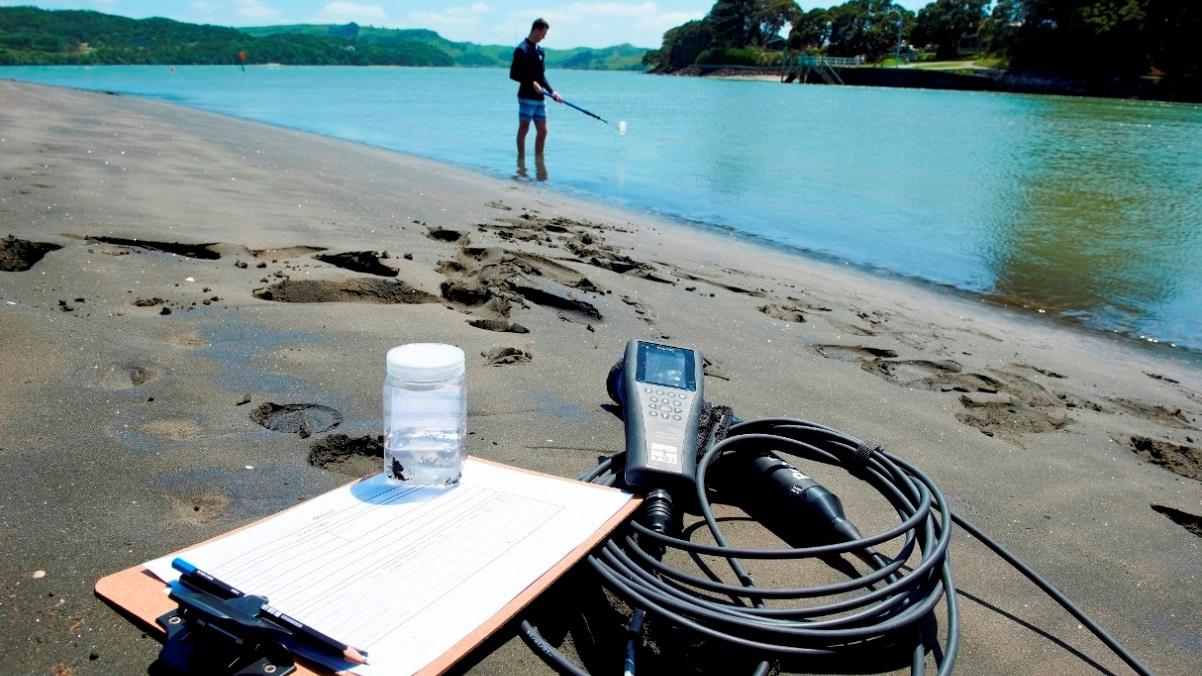Waikato Regional Council news
Quick link for Raglan’s Ngarunui Beach.
With the promise of long sunny days spent at the beach just around the corner, Waikato Regional Council has kicked off its summer coastal monitoring programme.
The annual programme collects data about the suitability of the water at popular Waikato beaches and estuaries for recreation activities like swimming and surfing.
Between 6 November and 31 March, council staff – assisted by two summer student workers – will collect coastal water samples weekly at multiple locations in the Waikato region.
Included locations are seven east coast beaches (Buffalo Beach, Hot Water Beach, Tairua, Pauanui, Whangamatā, Onemana and Whiritoa) and two west coast beaches (Sunset Beach at Port Waikato and Ngarunui near Raglan).
Collecting the water samples involves wading knee-high into the water and deploying a bottle on a pole, so as not to contaminate the sample. Staff also note contextual information such as salinity and water temperature.
Where possible, samples are collected in the vicinity of surf lifesavers, as it’s safer for people to swim between the flags and safer for council staff, too.
The water samples are sent to a laboratory to be tested for faecal indicator bacteria (enterococci in marine waters, and in estuaries, enterococci and E. coli). The number of faecal indicator bacteria present in the water are compared to guidelines which indicate the likelihood of contracting a disease from the many possible pathogenic bacteria or viruses.
“The quality of Waikato beach water is generally high, although our estuarine sites see a few more guidelines exceedances due to their proximity to catchment activities and less dilution compared to the open coast. Heavy rain such as we had last summer can result in contaminants from urban and rural land entering waterways,” says Coastal and Marine Science Team Leader Dr Michael Townsend.
“We always advocate for people not to swim in water for up to two days after heavy rain.”
Waikato Regional Council works closely with district councils and Te Whatu Ora – Health New Zealand (Waikato) to identify any results that may have public health implications and then communicate them.
Te Whatu Ora Medical Officer of Health for Waikato, Dr Richard Wall recommends that where Public Health warnings are in place, the water at these beaches should be avoided for all recreational use.
“If you do use the water for recreational purposes when a warning sign is in place, or after heavy rain, then you are potentially exposing yourself to harmful pathogens that can cause illnesses including gastroenteritis, respiratory illnesses and ear infections.”
Results from Waikato Regional Council monitoring are published as quickly as possible throughout the summer on the national environmental data platform, Land Air Water Aotearoa (LAWA).
“By making the information easily accessible, coastal water users can see the latest water quality measurements and, while each measurement represents a point in time, it’s possible to get an idea of how the water quality has tracked over time,” said Dr Townsend.
Waikato Regional Council: waikatoregion.govt.nz/coastal-recreational-water-quality
Land Air Water Aotearoa: lawa.org.nz/explore-data/swimming
